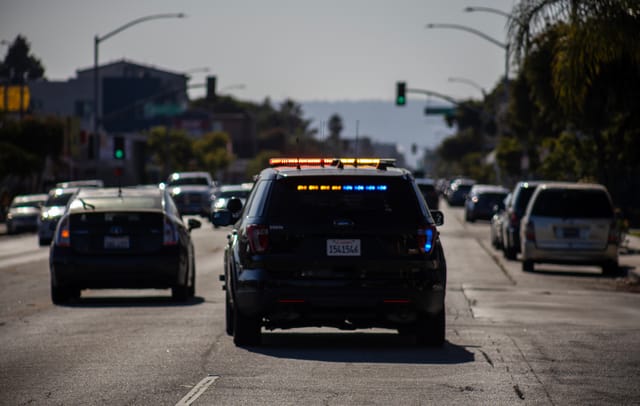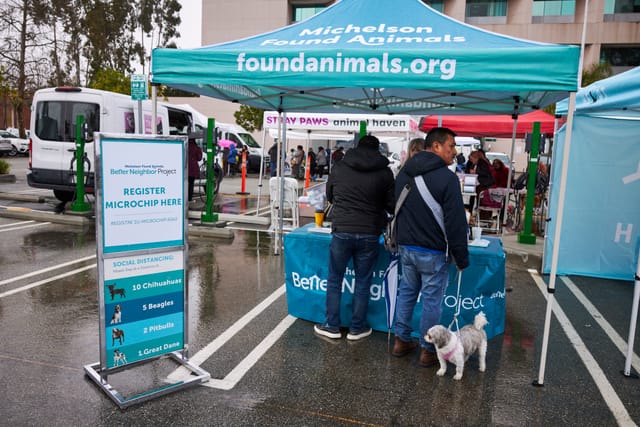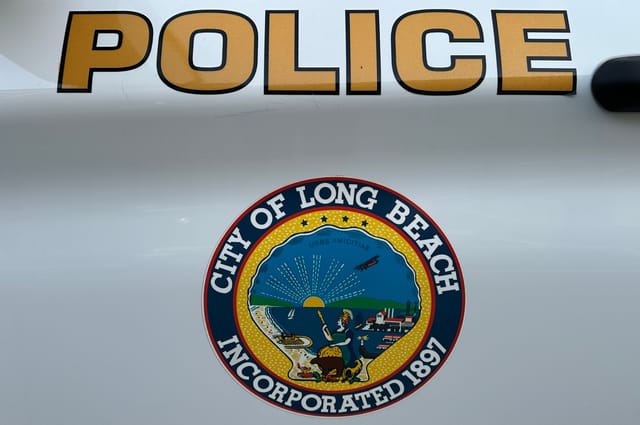Quieter and cleaner railroad tracks? Long Beach to talk with Union Pacific about changes
The Long Beach City Council asked city officials to look at creating a 'quiet zone' along the tracks and to work out an agreement allowing city workers access to clean up debris and provide homeless outreach at the tracks.

Long Beach could take steps to clean up and secure the Union Pacific Railroad tracks that run through the city and have attracted illegal dumping, graffiti and homeless encampments after the City Council asked Tuesday for the city to start negotiations with the railroad operator.
Council members Al Austin and Roberto Uranga asked city officials to look at establishing a memorandum of understanding with Union Pacific that could grant city employees like police officers and health department workers access to its right of way to address the ongoing issues.
The Union Pacific tracks run mostly through West and North Long Beach with its trains often running alongside homes. Residents have complained for years about the nuisance issues that have cropped up along the tracks including unhoused people trespassing, litter and fires.
“It’s important to mention that there is a gas line that runs right along that railroad track and it exacerbates the danger for many of those residents,” Austin said.
Austin said the tracks have created “unique and persistent” challenges and despite efforts by Union Pacific to clean up the tracks it’s clear that a formal agreement is necessary, Austin said.
Melissa Sanchez, a property manager who manages buildings along the tracks, said that one of her buildings is mostly vacant because of the ongoing problems along the tracks.
Sanchez said that one property has seen seven fires in the past year and that’s in addition to the litter, encampment and rodent issues that she says exist along the tracks.
“It literally looks like a madhouse back there,” Sanchez said.
Lupe Valdez, a senior public affairs director with the railroad, said that San Jose is the only city in the state that has the type of agreement that Long Beach is seeking and that was entered into before a new program was created in Southern California.
Valdez said that trespassing on Union Pacific property is punishable by a misdemeanor citation, something Valdez said can be a deterrent for people on probation.
But she acknowledged that there are ongoing issues along the tracks, pointing to fires that seemed to be purposefully started so firefighters would cut holes in the fencing around the tracks to provide easier access for trespassing.
“We have some clear problems along that corridor,” Valdez said.
Long Beach has secured similar agreements in the past including a recent one that allowed city workers to access freeway onramps and offramps where encampments had sprung up. Those areas are controlled by CalTrans.
If an agreement is struck between the city and Union Pacific, it would likely spell out who can access the space, who would pay for things like cleanups and homeless outreach services and set regular meetings between the city and the railroad operator.
Cleaning up the railroad tracks is not the only thing Long Beach is looking into. Uranga and Austin also asked for discussions to begin on creating a potential “quiet zone” near residences along the line.
Federal regulations require the use of train horns before approaching at-grade crossings. Austin and Uranga said that the noise, which can last from 15-20 seconds, is similar to the levels of a loud concert and it’s created quality of life issues for those living near the tracks.
“One thing about the noise, when you’re talking about a horn between 10 p.m. and. 7 a.m., it travels,” Uranga said. “Noise at night travels farther than during the day.”
The idea is to create a quiet zone between the hours of 10 p.m. and 7 a.m., similar to the city’s noise ordinance that governs flight times at the Long Beach Airport. But establishing the zone will require negotiations with the federal and state governments.
To create a quiet zone, cities have to provide alternative safety measures like medians, additional traffic signals and other devices to make the use of horns less necessary.
Austin and Uranga’s request would affect the two at-grade crossings in the city at Wardlow Road on the Westside and on Market Street near the border with Lakewood.
However, Valdez said that it won’t wipe out the use of train horns completely if the city is able to establish a quiet zone.
“If there’s anyone on the tracks or maintenance workers, it doesn't matter. They’ll sound the horn as a safety device,” Valdez said. “It’s the only safety device the engineers have to prevent a catastrophic situation."
Valdez said that Union Pacific’s tracks average a death about every 48 hours.
“It’s unforgiving,” she said of the trains.
Pomona is the only city along the corridor that runs through Long Beach that has established a quiet zone. Valdez said that creating and maintaining a quiet zone could be very expensive and the city could have to look at outside funding to help pay for the improvements.
We need your support.
Subcribe to the Watchdog today.
The Long Beach Watchdog is owned by journalists, and paid for by readers like you. If independent, local reporting like the story you just read is important to you, support our work by becoming a subscriber.





